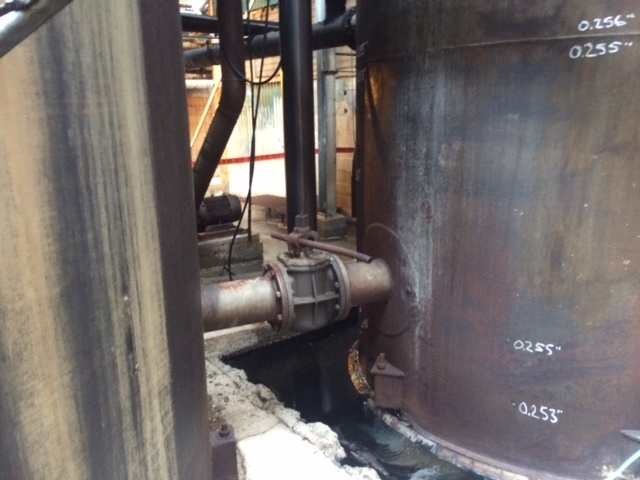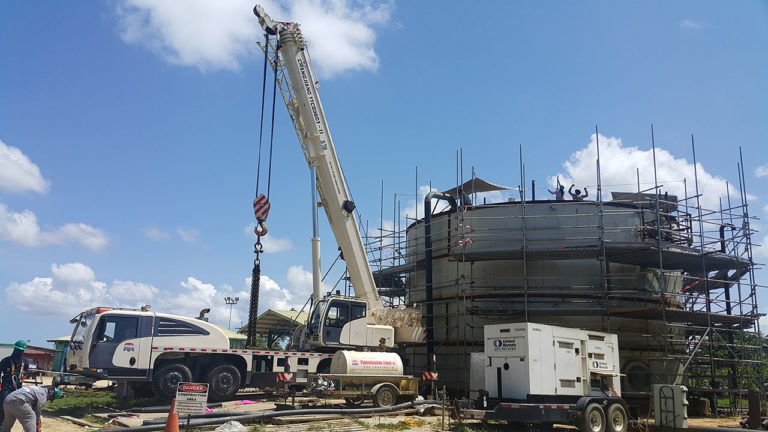Comprehending the Value of Welding Assessment in Top Quality Assurance Processes
Welding inspection is a necessary component of quality control in building and construction and manufacturing. It guarantees that welds abide with well established requirements, which is important for structural integrity. Various assessment methods, from visual to ultrasonic testing, assistance identify defects early. This positive approach not only stops pricey repairs but likewise enhances safety. Comprehending the nuances of welding evaluation can disclose its wider implications for industry compliance and online reputation. API 650 Welding Inspection. What exists underneath the surface area of these techniques?
The Duty of Welding Examination in Quality Control
While welding is a vital procedure in numerous markets, its top quality and honesty hinge substantially on reliable assessment practices. Welding evaluation functions as a safeguard, making sure that welds fulfill well-known criteria and specifications. This process not only recognizes problems yet also examines the general workmanship, therefore adding to the safety and long life of bonded frameworks. Assessments are indispensable to quality control, as they assist avoid pricey failings and maintain compliance with sector laws. By utilizing proficient assessors, organizations can improve their functional performance and support their online reputations. Additionally, the insights acquired from inspections can educate continual enhancement, resulting in better methodologies and training for welders. Inevitably, welding evaluation serves as a vital web link in the high quality assurance chain, ensuring that every joint is dependable and qualified of withstanding the roughness of its desired application. This diligence is important for the honesty of infrastructure and the safety of end individuals.
Sorts Of Welding Inspections
Welding examinations encompass a series of techniques created to examine the high quality and stability of welds. These assessments are necessary in guaranteeing compliance with industry criteria and requirements. Typical sorts of welding evaluations consist of aesthetic examination, which enables immediate identification of surface irregularities; ultrasonic screening, which makes use of high-frequency acoustic waves to discover internal defects; and radiographic screening, employing X-rays or gamma rays to disclose weld integrity under the surface (API 650 Welding Inspection). Furthermore, magnetic bit testing is used to determine surface and near-surface suspensions in ferromagnetic materials, while color penetrant testing provides a method for disclosing surface-breaking issues. Each kind of evaluation offers a details objective, contributing to the overall quality control procedure. By employing a combination of these methods, examiners can give a detailed assessment of welding quality, eventually making certain the security and dependability of bonded structures
Common Issues Spotted in Welding
A selection of typical flaws can happen during the welding procedure, impacting the honesty and performance of welded structures. These defects include porosity, which includes trapped gas pockets within the weld, damaging its strength. Splits might likewise develop because of rapid cooling or inappropriate joint design, causing potential failing under anxiety. Incomplete fusion happens when there is insufficient melting of the base metal, leading to weak read more bonds. An additional defect, undercutting, involves the removal of base steel along the weld edge, producing a considerable structural weakness. Furthermore, too much spatter can affect the look and require more cleansing or repair. Imbalance can lead to irregular weld grains, endangering the general quality. Determining these issues early via correct examination strategies is important to guarantee the integrity and safety of welded components, inevitably guarding the efficiency of the entire structure.

Benefits of Routine Welding Evaluations
Normal assessments play a significant duty in preserving the top quality and security of bonded structures, specifically because of the usual problems formerly outlined. These assessments provide a possibility to identify and correct concerns before they rise right into major troubles, guaranteeing architectural integrity. By spotting imperfections early, organizations can lessen repair expenses and stay clear of prospective job delays.
Furthermore, normal welding evaluations boost compliance with market standards and laws, fostering depend on amongst stakeholders. This adherence not only shields the company's online reputation but also adds to improved safety for employees and the general public.
Regular examinations promote better training and ability growth for welders, as comments from evaluations can lead renovations. Ultimately, the advantages of routine welding assessments prolong past instant quality control, advertising lasting operational performance and dependability in welded frameworks.
Ideal Practices for Effective Welding Inspection
Applying finest techniques in welding inspection is vital for ensuring the highest criteria of quality and safety and security. Examiners must be effectively trained and accredited, having an extensive understanding of welding strategies and materials. Using innovative evaluation modern technologies, such as ultrasonic screening and radiography, enhances the detection of issues that may not be visible to the nude eye. Developing a clear evaluation strategy, describing the criteria and frequency of assessments, guarantees consistency and thoroughness.

Recording all findings carefully is crucial for traceability and accountability. Routine calibration of inspection equipment guarantees precision, while preserving a well organized and tidy workspace minimizes the danger of contamination. Furthermore, cultivating open communication among employee my website facilitates the sharing of insights and promotes a society of top quality. By sticking to check my reference these ideal techniques, companies can significantly enhance their welding high quality assurance processes, inevitably bring about more secure and extra reliable items.

Regularly Asked Concerns
What Qualifications Are Required for a Welding Inspector?
A welding examiner usually calls for accreditation from recognized companies, such as the American Welding Society (AWS) or the International Institute of Welding (IIW), in addition to appropriate experience and knowledge in welding procedures and quality requirements.
Just How Frequently Should Welding Inspections Be Done?
Welding inspections must be executed frequently, typically at different job phases, consisting of before, during, and after welding processes - API 650 Welding Inspection. The regularity often relies on task specifications, regulatory needs, and the complexity of the welds involved
What Are the Costs Related To Welding Evaluations?
The expenses linked with welding inspections differ extensively, usually varying from a couple of hundred to numerous thousand bucks, relying on aspects like assessment kind, job size, and location, impacting overall project budgets and timelines.
Can Welding Inspections Be Conducted From Another Location?
Yes, welding examinations can be carried out from another location utilizing advanced technologies such as drones, electronic cameras, and ultrasonic screening. These techniques enable inspectors to assess weld honesty without being literally present, improving performance and safety and security in numerous atmospheres.
How Do Assessment Results Impact Project Timelines?
Inspection results can significantly affect project timelines by recognizing issues early, leading to required rework or adjustments. Hold-ups may occur if examinations disclose issues requiring resolution, ultimately impacting general job conclusion and spending plan adherence.
Welding examinations include an array of methods made to assess the top quality and integrity of welds. Usual types of welding assessments consist of aesthetic assessment, which enables for prompt identification of surface area abnormalities; ultrasonic testing, which utilizes high-frequency audio waves to discover inner defects; and radiographic screening, using X-rays or gamma rays to reveal weld stability underneath the surface area. Consistent assessments promote better training and skill advancement for welders, as responses from inspections can assist renovations. Implementing best methods in welding assessment is essential for ensuring the greatest requirements of top quality and safety and security. Welding inspections ought to be performed on a regular basis, commonly at various job stages, consisting of prior to, throughout, and after welding processes.